Rise&Shine (talk | contribs) No edit summary |
Rise&Shine (talk | contribs) |
||
| Line 18: | Line 18: | ||
This is a review of the available literature pertinent to the a specific project. | This is a review of the available literature pertinent to the a specific project. | ||
=== | ===Lighting=== | ||
Large windows bring risks of glare problems, poor distribution of brightness, or excessive heat or heat loss. An answer to good lighting is looking at the broader context of design. Lighting design has a lot to do with perception of light: functional, aesthetic, emotional and somatic. The role of lighting goes beyond illumination and should consider its other functions. Windows should meet the demands of brightness for working, a sense of security, and orientation. Good useful lighting does not only make things visible, it also directs gaze, controls perception, and draws attention to details. The planning of natural light is primarily dependent on the availability of natural light. This availability is determined by natural conditions such as climate zone and the surroundings of the building and can be influenced by orientation, the form of the building, and the dimensions of the interior and exterior space. As a general rule of thumb for design, consider the context and additional factors before making decisions on lighting design. <ref>Corrodi, M., Spechtenhauser, K., & Auer, G. (2008). Illuminating: Natural light in residential architecture (Edition Wohnen. English ; 3). Pages 129-177. | |||
.</ref> | |||
The quantity and distribution of natural light inside buildings is directly related to their design (distribution, orientation and dimension of openings). They are conditioned by the site characteristics, the construction density aspects, height of buildings, dimensions and proportions of exterior spaces, direct sunning and sun reflection on exterior surfaces, as well as by the presence of trees, billboards and other components of surrounding scenery.Aiming at sustainable urban design is the most adequate way to achieve the desired goal and its consideration must be a priority in every situation. <ref>Mesa, Corica, & Pattini. (2011). Evaluation of the potential of natural light to illuminate buildings in dense urban environment. A study in Mendoza, Argentina. Renewable Energy, 36(9), 2414-2423..</ref> | |||
=== | ===Building Materials=== | ||
Short introduction to | Short paragraph on the materials.<ref>Another example of footnotes.</ref> | ||
===Storm preparation=== | |||
Short introduction to... <ref name=Example>This is an example of a named reference. You can use these named references to repeat citation content throughout the document.</ref> | |||
====Type 1==== | ====Type 1==== | ||
| Line 33: | Line 36: | ||
Type 2 composting is a system that utilizes..... Make sure to include description, advantages and disadvantages, and/or have a comparison matrix. <ref name=Example/> | Type 2 composting is a system that utilizes..... Make sure to include description, advantages and disadvantages, and/or have a comparison matrix. <ref name=Example/> | ||
=== | ===Aesthetics=== | ||
According to ______ interpretive materials for composting should include.... | According to ______ interpretive materials for composting should include.... | ||
===Project History=== | |||
... | |||
==References== | ==References== | ||
Revision as of 05:40, 21 February 2019
Background
The purpose of our team is to design and apply our solutions for the renovation of the yurt roof which is located at CCAT, Campus Center for Appropriate Technology, on Humboldt State University campus. For more information about CCAT:CCAT’s webpage
Team Members: Students enrolled in the Spring 2019 Engineering Appropriate Technology Class 305.
The yurt is a permanent structure at CCAT open to community and students, and it houses several features for comfort and education of appropriate technology. Our goal is to design and build the yurt roof in eco-harmony with the least amount of impact on the environment including the community and Mother Earth. Generations of students and community will be welcomed to use and enhance the space.
Problem statement
We will come together to successfully design, build and test an appropriate technology solution that will have a lasting impact within our local and broader communities. Our goal is to not only to build a functioning roof, but also to educate other students and to better ourselves in the process. Also, we will learn how to budget for such a project, consider what kind of future maintenance the roof may need, and determine what is aesthetically appropriate for the location.
From the Team Members
We are looking forward to this project, and recommend others in our community to stop by CCAT. If you are not in our area we look forward to your insights and stories. Thank you. For more information about Appropriate Technology and past projects concerning the yurt click here: Appropriate Technology SALIRAJA Yurt Project
Literature Review
This is a review of the available literature pertinent to the a specific project.
Lighting
Large windows bring risks of glare problems, poor distribution of brightness, or excessive heat or heat loss. An answer to good lighting is looking at the broader context of design. Lighting design has a lot to do with perception of light: functional, aesthetic, emotional and somatic. The role of lighting goes beyond illumination and should consider its other functions. Windows should meet the demands of brightness for working, a sense of security, and orientation. Good useful lighting does not only make things visible, it also directs gaze, controls perception, and draws attention to details. The planning of natural light is primarily dependent on the availability of natural light. This availability is determined by natural conditions such as climate zone and the surroundings of the building and can be influenced by orientation, the form of the building, and the dimensions of the interior and exterior space. As a general rule of thumb for design, consider the context and additional factors before making decisions on lighting design. [1]
The quantity and distribution of natural light inside buildings is directly related to their design (distribution, orientation and dimension of openings). They are conditioned by the site characteristics, the construction density aspects, height of buildings, dimensions and proportions of exterior spaces, direct sunning and sun reflection on exterior surfaces, as well as by the presence of trees, billboards and other components of surrounding scenery.Aiming at sustainable urban design is the most adequate way to achieve the desired goal and its consideration must be a priority in every situation. [2]
Building Materials
Short paragraph on the materials.[3]
Storm preparation
Short introduction to... [4]
Type 1
Type 1 composting is a system that utilizes..... Make sure to include description [5], advantages and disadvantages, and/or have a comparison matrix.
Type 2
Type 2 composting is a system that utilizes..... Make sure to include description, advantages and disadvantages, and/or have a comparison matrix. [4]
Aesthetics
According to ______ interpretive materials for composting should include....
Project History
...
References
The following photo is an image of the yurt prior to any of the renovations. Image credit: A.R.Shearer
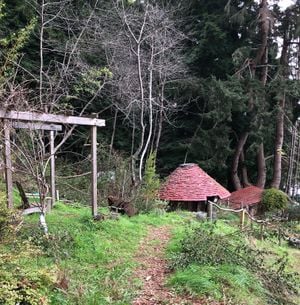
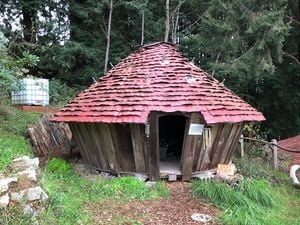
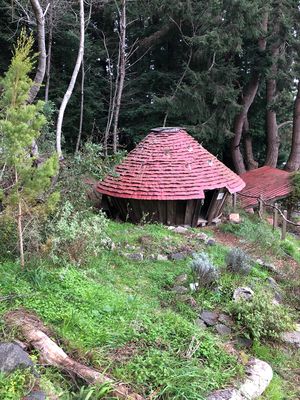
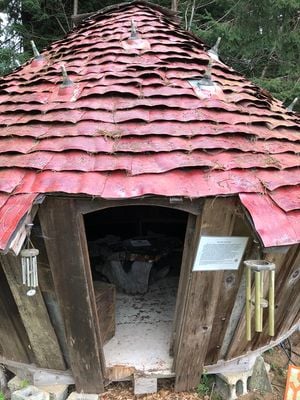
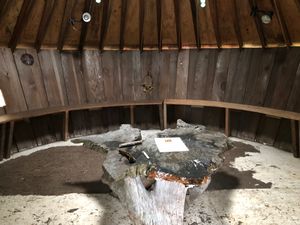
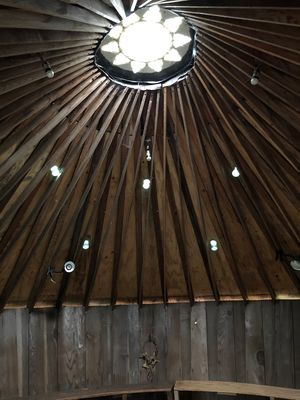
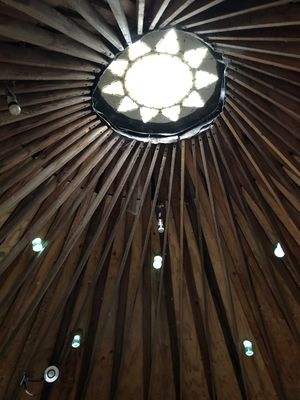
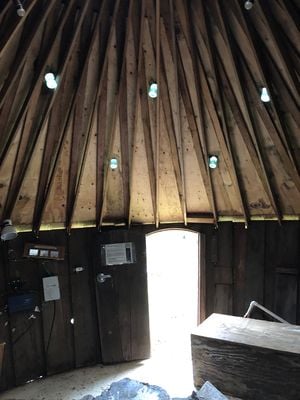
- ↑ Corrodi, M., Spechtenhauser, K., & Auer, G. (2008). Illuminating: Natural light in residential architecture (Edition Wohnen. English ; 3). Pages 129-177. .
- ↑ Mesa, Corica, & Pattini. (2011). Evaluation of the potential of natural light to illuminate buildings in dense urban environment. A study in Mendoza, Argentina. Renewable Energy, 36(9), 2414-2423..
- ↑ Another example of footnotes.
- ↑ 4.0 4.1 This is an example of a named reference. You can use these named references to repeat citation content throughout the document.
- ↑ This is a third example of a plain footnote.